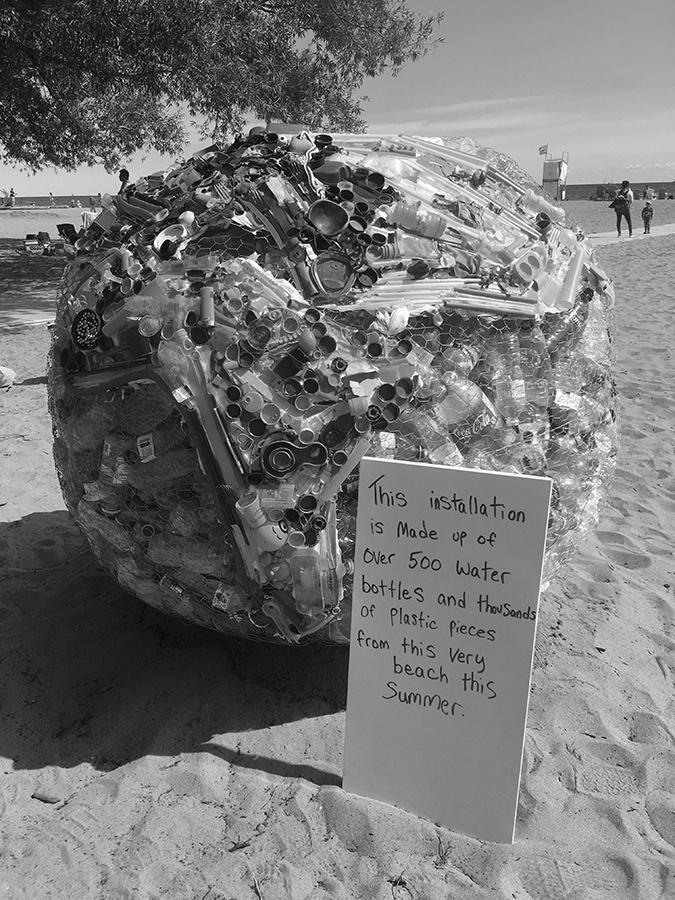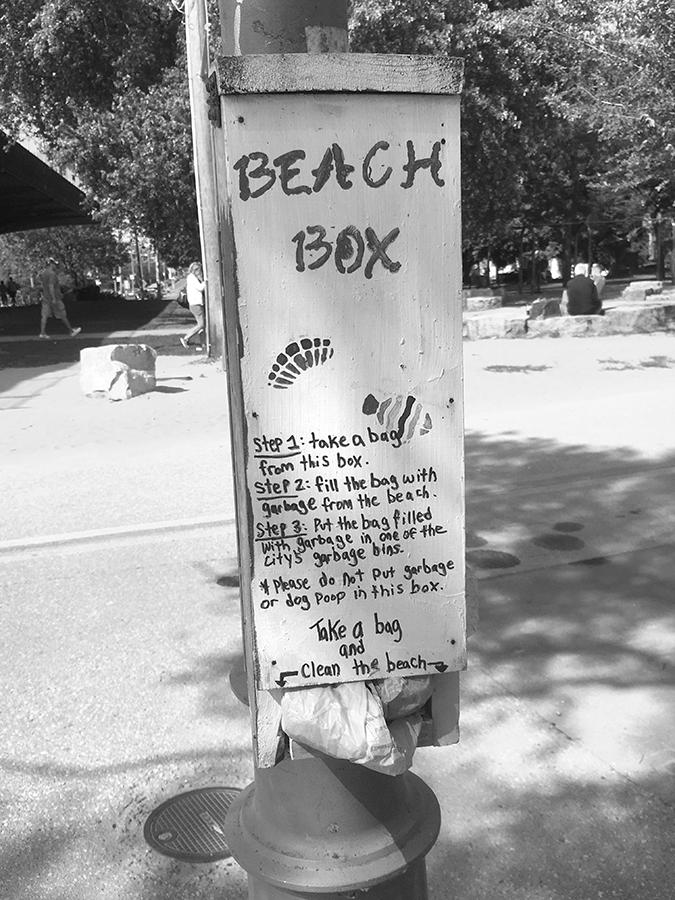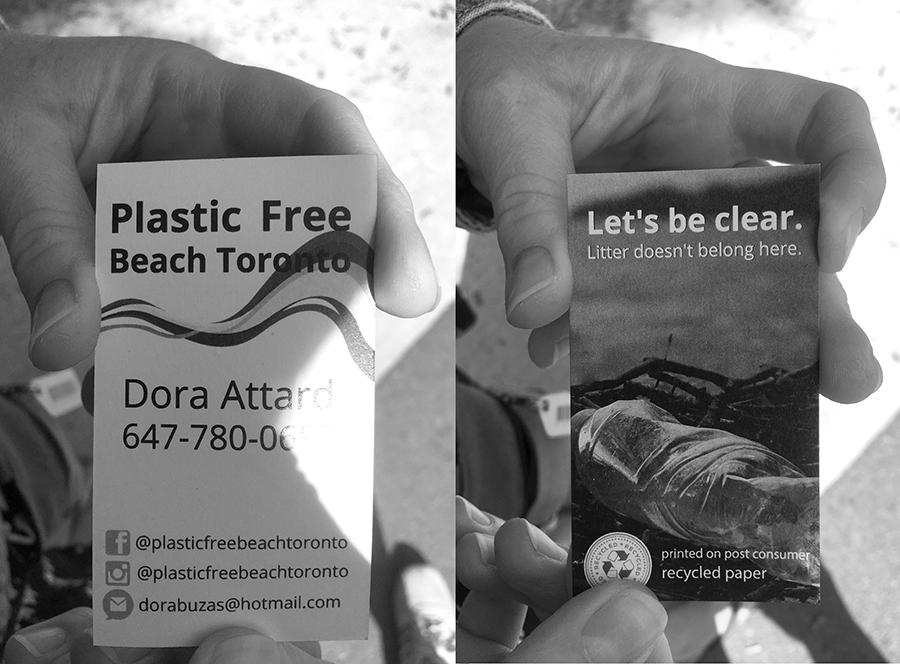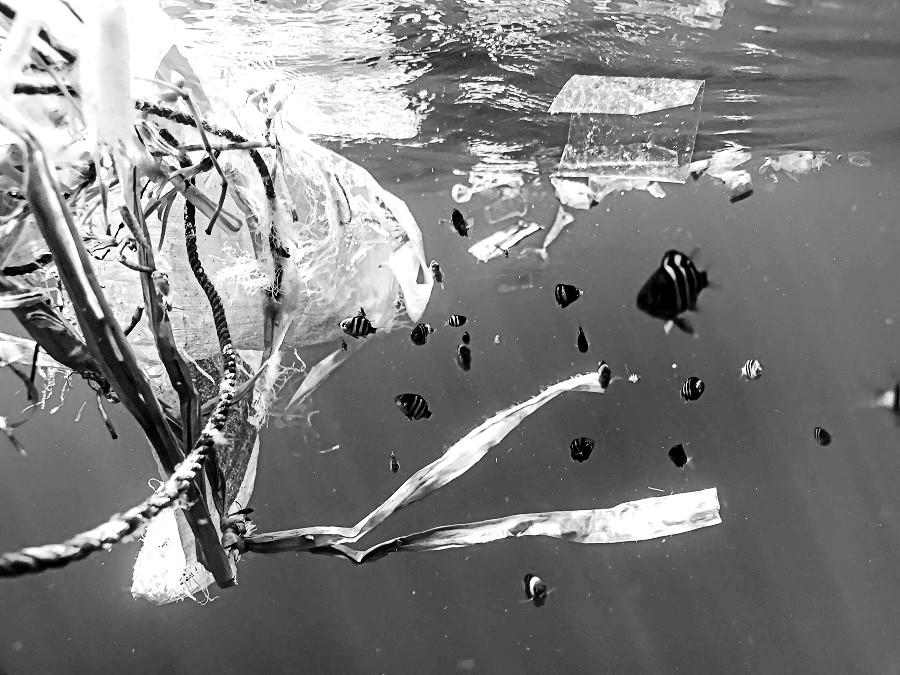Skip the Black Friday this year, pleaaaase!
Black Friday is here again. Millions will spend more than they can afford, buy more than they need, and create a ridiculous amount of waste!
As the last post on Plastic-Free July, we will leave you with various quotes on plastic. Learn and make a change!
Be open and let the world inspire you. Dora Attard inspired us when we met her at Woodbine Beach. Please find out more about her work below.
Since there is not much left of Plastic-Free July, which we prefer to call Plastic-Free Every Day, this is high time to introduce you to a wonderful woman, Dora Attard. Have you ever met a complete stranger in your city whose work inspires you? We did, on a warmish early September day in 2020, our last beach day of the year. It was Sunday, which is why we were able to meet her in the first place.
She is a Toronto resident and a garbage collector. And Dora Attard is also the founder of Plastic Free Beach Toronto. Plastic Free Beach Toronto is an organization that educates people on the amount of single-use plastic that is used and thrown away daily and encourages people to create a cleaner world for future generations.
The way we got to know Dora was so random. As we were leaving our beach day and sending our friends closer to their bus stop, we noticed her giant globe made of trash. It is made from the garbage collected on Woodbine Beach this past summer. In the artwork, water bottles make up the world’s oceans while plastics of different colours make up the continents. We approached her to find out more, and we ended up having a refreshing conversation with her and her friend.
We found out that they have been doing this activity for quite some time. Presenting the beautiful artwork, which she had to install and dismantle every day, wasn’t all she did. Dora is a passionate fighter against plastic. She is bringing awareness to the problem of plastic use, promotes a plastic-free lifestyle, suggests skipping single-use plastic, etc. Plus she organizes garbage pick-up at Woodbine Beach. Since it was the end of the day, we couldn’t participate in this activity, but had a nice chat with Dora.

Plastic is a substance that companies create to make easy money. It may be convenient, but is it worth the huge price that our planet and its inhabitants have to pay? Plastic will outlive us, and that in of itself should shock us. It should be a universal law that species do not leave Earth worse than they found it, that we do not destroy the planet for future generations.
In Canada, just 9% of the plastics collected will be recycled. This number is so ridiculously small. This long-lasting, poisonous material will be here for a long time. Plastic poses the most risk to the waterways. How will the beaches, lakes, rivers, streams, and ponds on Earth look in 5 years’ time? 10 years? 20 years? This is why it is important to deal with plastic now; today. This is crucial so that we avoid problems associated with each time frame in our home country.
We love Dora’s work, that she saw the problem and she took matters into her own hands. What a great way to make a change in your community! She said that the pieces of garbage most commonly found on the beach are cigarette butts, lids and bottle caps, water bottles, and plastic straws. She also finds needles, which humans and animals may step on or they may be found by children. The above-mentioned quite large plastic pieces are not the main problem. “The majority of the little bits I find are washed up from lake that has been broken down in microplastics. They’re eaten by birds and fish, and if you’re not a vegetarian and you eat the fish, then the plastic ends up inside of your body.” Dora stated.
Participate at the Beach Clean-Up Day! It takes place on Sundays from 8-10 AM on Woodbine Beach up until the beginning of Fall. Always be sure to check Dora’s Instagram account for up-to-date information. Please share her handle with your friends and urge them to join you to the clean-up-day, to help keep our beaches clean and beautiful. Dora and her team will provide reusable gloves, buckets/bags, and pickers. The meeting place is out front of the Olympic Swimming Pool.
We are really interested in participating, but since Sunday is the only real relaxing day – read: sleep-in-day – then, unfortunately, yes, this Is the situation. BUT if a miracle will happen and I find myself wide awake at 7 AM, then Dora be sure, I will be there!

Watch a short clip about Dora Attard and her work at CBC.com and read more on the same page.
Watch a video of Dora explaining what is it exactly she is doing in this video.
Visit Dora’s Instagram account Plastic Free Beach Toronto.
Support her work and buy her plastic artwork from Etsy.

We have been consciously plastic-free for 3 years. But we still hate it, so we are curious if there is a way to make peace with plastic.
We came up with a quick and short way of getting our messages out there. Let this plastic detox post be the first of its kind!
Most likely not, but July allows us to bring more attention to a (useless?) material, which is polluting our world in every field of the world.
We are literally drowning in plastic and most of it is absolutely useless. It found its way to our home as a wrapper around so many products. The main task of plastic is to offer a case in what we are bringing food home. Or something else like beauty, cleaning and household products, most of the things really. It almost seems pointless to talk about the useless plastic we are trashing daily.
It is a unique material with many benefits.
It is:
So all this makes plastic a valuable material for many functions. Ir provides environmental benefits, as believe it or not, it actually plays a critical role in the food industry. It helps to maintain food quality, its safety and helps to reduce food waste. Though it hurts us to see produce packed in plastic, most of the time excessive, it ables for the products to reach to the stores and our homes safely and fresh. Of course one can skip the plastic while buying local and visiting farmer’s markets. But as plastic is convenient, so is shopping at the grocery malls.
Even if we consciously are thinking of bringing less plastic home, it lurks in some little-known places. You can look around in your home, and not go that wild, as Werner Boote did. He bought out all the items at his home, which were made of plastic. And he set them on his lawn. Take a look at the photo and find out about the 2009 documentary here. So these are the most common items you can find at home made of plastic.
We all have most of these listed items at home. Can we live without them? Sure! Though it is difficult we can make wiser choices and eliminate as much as we can.
What we all can do to create less garbage, or at least bring less of it home, is to choose plastic-free items. Yes, not only products, which are wrapped with a material that is having a negative impact on our oceans and wildlife. But also products which are made of useless plastic. People tend to create more waste in high-income countries. So it should be also easier to implement the changes in such places. If you are in North America, when reading this, please do your part.
Here is a list of materials to choose over plastic:
Choosing these materials over useless plastic, which is so over-produced, because it is cheap and relatively durable, you will start seeing less plastic in your home. By choosing the above-mentioned materials you are already making the world a better place. A tiny step at the time. Based on where you are located the management of plastic determines the risk of plastic entering the ocean. High-income countries have quite effective waste management systems. So only a little will end up in the oceans. Worse is the situation in middle- and low-income countries. Because they are the main sources of global plastic pollution.

There are many easy swaps on how we all can start to cut plastic pollution. This is a small, but great step to make us feel good and do our part. Start with the basic manageable swaps, which are helping cut down the plastic use.
We suggest you start with the easier swaps, as listed above first and then move to the harder ones. Also, do not be afraid of reusing. This also helps to save items and helps to create less plastic. Some swaps are much easier to make than others — but you can definitely tackle the harder ones if you challenge yourself. Approach playfully and while looking for plastic-free options opt for cheaper options, so you can save more and buy other plastic-free items. Plastic-Free-July is here to provide much-needed information about (useless) plastic and how to avoid it.
Read more detailed suggestions from a wonderful article Learn Earth Easy has written and get more swap ideas.
We can’t help but notice as July is approaching that it is time to celebrate Plastic-Free July. We have a complicated relationship with plastic for some years. I mean we are not buying plastic things and if we want to buy something, we consider where it is made and of what it is made and then reconsider. The beginning was hard, but since we love challenges, we did it. It is the right moment to check the Plastic-Free July to-do sheet and be determined to keep your promises. Share THIS SHEET with your friends to make it more fun!
But on a more serious note, unfortunately, the trade-offs between plastic and substitutes are complex. As earlier said plastic is a good material to use in the food industry for example. As it is essential for the prevention of food losses, wastage, and contamination. Storage and packaging play a crucial role from harvest all the way through to the final consumption of the foods we eat. Even if some consider the final phase of packaging (from retail to home) to be unnecessary, it is likely it has played an important role in preserving food from the farm to the retail stage.
So, plastic may not be so useless then after all. And perhaps the main solution here is to close down plastic-producing plants. One by one. As otherwise, our best efforts seem like taping the crumbling wall with pieces of tape. Or should we do anything at all?
After watching this video – you will know more than enough about Tru Earth laundry eco-strips and you will be sold. We definitely are!
We are on our neverending path, getting to know more what things consist of. Join our adventure on finding thin plastic lining.
You are what you eat, but how about how much garbage you create? Let’s dig into our little garbage container and peek what is in the three bags.
As we have said many times earlier: we are trying to consume less, mostly less plastic, and keep the household clutter-free. Sometimes things just come to us. This can be simply avoided. Always buy what you really need, write down a list to avoid extra purchases, do not shop hungry and alone.
Anyway while on our new path, some may probably wonder how much garbage we are creating in a week. I have to explain a bit about our buying habits. Since we are vegan, we buy mostly fresh produce, oftentimes beans and tomatoes in a can, rice, and pasta. Unfortunately, the two latter come in plastic bags, which we are looking to skip as well or buy bags of rice in bulk. Also, we are lucky that we can save ready-made food from the workplace’s canteen, which keeps us away from buying plastic-wrapped grocery items. Needless to say, when buying things, we look for items made of metal, wood, glass and we are trying to buy food packed in paper, cardboard, glass, and tin cans.
As said earlier, we have a little cardboard box, where we store three little plastic bags. We are collecting paper/cardboard, packages, and garbage. Organic waste is collected to a bowl, which we empty daily to our building’s organic waste bin.
Below are descriptive photos of our garbage bags on a random week.

It contains Alpro yogurt container’s paper wrapping, toilet paper roll’s inside, some teabag wrappers, and a towel’s tag.

Here you can see a bag of rice, kidney beans can, and a cookie wrapper. You can’t see Alpro yogurt container, as we reused it for something else.

Here you can see mostly tissue paper, wet tissues, floss, Alrpo yogurt containers aluminum lid, some dust, and lint.
The photos above change weekly, depending on our consumption habits. But we are glad that we have managed to keep our three little garbage bags quite minimalistic. We are not into buying things and consume plastic – so I guess we have a head start.
Please read our other article, how we are sorting garbage in our kitchen.
You most likely have come across the photos of the waste jars of zero-wasters all around the world. Their little containers hold almost nothing of what they trash in a year. Their jars look perhaps like an average person’s hourly trash, if even. Don’t be intimidated by the little waste they are creating. It is impossible to live completely waste-free, as things may break down, things that are not recyclable and are made of plastic. Though you can come across households, which contain no plastic and traditional paints whatsoever. Goals, uh?
But it doesn’t mean that you shouldn’t try to eliminate plastic from your household or consume less. Yes, please do that, it is good for our planet and your wallet. Buy less, buy only what you need, try to find it without plastic and try these three zero waste disposal options, before trashing the goods.
Just make a clear plan for yourself of what you want to bring home and how you can have a clear overview of your expenditures. Such little container with three little sections works the best for us.
How have you organized your garbage collection and how you avoid plastic? Share your experiences with us!